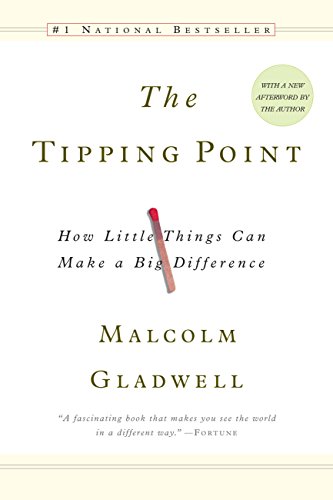

This article is an excerpt from the Shortform summary of "The Tipping Point" by Malcolm Gladwell. Shortform has the world's best summaries of books you should be reading.
Like this article? Sign up for a free trial here .
How has the Information Age impacted the way we interact with one another? There undoubtedly many positive consequences. What are the negative outcomes?
We’ll cover three ways the Information Age has impacted social epidemics, or the spread of ideas: the rise of isolationism, the rise of immunity, and the issue of finding “mavens,” people to help spread information.
How the Information Age Impacts Social Epidemics
We’ll look at how the Information Age is leading us to rely more heavily on word of mouth and primitive forms of social connections. The surfeit of media and information we are exposed to is overwhelming and essentially leads us back to basics.
Information Age Consequence #1: The Rise of Isolation
While technology in the Information Age allows for more connectivity in the virtual world, it can also lead us to be more socially isolated. You text with friends and family instead of calling or visiting, you order goods and services online instead of going out in public to shop in a store, and you can work from the privacy and comfort of your own home instead of commuting to an office.
Adolescents have grown up in this culture of the Information Age, and in recent years they have experienced more isolation than past generations of adolescents as a result of several factors.
- Technology creates a space in which teens talk to each other privately, without much (if any) supervision or input from adults. Between text messages, emails, phone calls, and social media, there are entire virtual worlds that teens inhabit where they can interact only with other teens.
- Adolescents, on the whole, also have more money, time, and freedom to create a social world with less adult influence.
- Together, these adolescent-ruled spaces provide platforms for information and messages to circulate, evolve, and take on new meaning and distorted logic without being checked by outside, adult sources.
Case Study: Adolescent Isolation and School Shootings
The school shooting epidemic in the U.S. since Columbine resulted, at least in part, from adolescent isolation and the construction of exclusively teen-inhabited worlds. Nearly all school shooters have been teens or young adults, so the epidemic spread almost solely among adolescents. Many of the shooters had commonalities, such as being bullied and lonely. But generations of teens have been bullied and lonely before they began shooting up schools.
In this epidemic, Columbine changed something within adolescents’ isolated world to alter the thought processes and behavior of subsequent school shooters. Somewhat similarly to the Micronesia’s suicide epidemic, school shootings became a new reaction to an old stimulus (bullying and ostracization), and this response became ritualized and contagious. The epidemic was able to spread because it was safely within the insulated adolescent worlds. This is an indirect consequence of the Information Age.
Information Age Consequence #2: The Rise of Immunity
In the Information Age, we have access to people and information via so many different forums — traditional media like print, television, and radio as well as digital media, from messaging apps to emails to websites to social platforms. Epidemics rely on this kind of interconnectedness in networks to spread diseases, ideas, or products.
The importance of networks is explained in the law of plentitude, or the “fax effect,” which says that the first fax machine was essentially worthless because no one else had a fax machine to receive your fax. The second fax machine made the first more valuable, and every subsequent fax machine sold made each one increasingly valuable because they expanded the network of people with whom you could exchange faxes; each additional participant adds to the value of the network as a whole. In a network, plentitude creates power and value, which is contradictory to the rule of supply and demand that limited supply makes something more valuable; .
However, once that plentitude passes a certain threshold, a large network can also lead to the fall of an epidemic. In the case of a virus, you may catch a flu that’s going around and then you develop an immunity to it; the flu can spread like wildfire, but once enough people have immunity, it has reached its natural end. (Shortform example: In the case of a social epidemic, a particular fashion trend may start among SoHo trendsetters and then is translated and spread to a larger, mainstream audience. But by the time the look is being replicated at JC Penney, it has been played out and lost its appeal not only to the trendsetters but even to the fashion-aware mainstream. The epidemic is over.)
Technology is creating an ever-expanding network, and people’s increasing interconnectedness in the Information Age is leading us to become immune to all the information and communication we receive. At a certain point, all that information becomes white noise and it is difficult for any one thing to grab our attention. And if you’re trying to start an epidemic, how do you make your message stand out from all that commotion?
This makes the Law of the Few even more critical, because people’s response to information overload in the Information Age is to limit their focus to trusted sources, like Mavens, Connectors, and Salesmen.
Information Age Consequence #3: Difficulty Finding Mavens
If you’re trying to tip a social epidemic in the Information Age, how do you find the messengers to help you do that? Connectors naturally know many people and are relatively easy to find because they are inclined to find you. But Mavens can be harder to locate, so when the opportunity arises, it can be helpful to set Maven traps.
It’s not always possible to manufacture a Maven trap, but sometimes the right conditions create the opportunity. The key is to understand the principles and importance of word of mouth — especially in this age of isolation and immunity — so that you can recognize and seize opportunities when they arise.
Case Study: How Lexus Turned a Recall Into a Maven Trap
Shortly after Lexus launched its first line of luxury cars, the company found two small problems that required a recall. This was embarrassing for a company that was marketing luxury, high-quality, and reliability, so Lexus went the extra mile with the recall: The company called each affected car owner about the recall, and when the dealerships did the repairs they also washed the cars and filled the gas tanks. What’s more, if customers lived far from a dealership, the dealer sent a mechanic to the customer’s home to do the repairs.
Lexus took this extra effort because they realized that these customers were Car Mavens (Shortform note: Gladwell reasons Car Mavens are the only people who would take a chance on a brand-new luxury car model). The Maven trap was practically set already with the recall, and all Lexus had to do was capitalize on the opportunity to do right by these Mavens so that they would, in turn, spread the word about the company’s exceptional customer service. And they did, contributing Lexus’s reputation for excellent customer service.
———End of Preview———

Like what you just read? Read the rest of the world's best summary of "The Tipping Point" at Shortform . Learn the book's critical concepts in 20 minutes or less .
Here's what you'll find in our full Tipping Point summary :
- What makes some movements tip into social epidemics
- The 3 key types of people you need on your side
- How to cause tipping points in business and life






